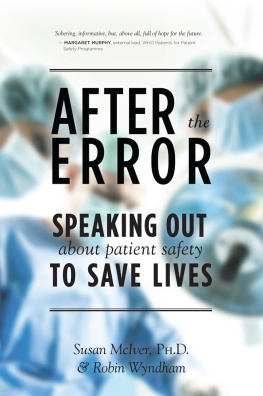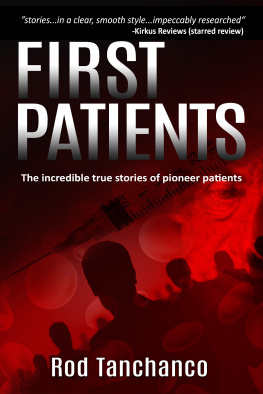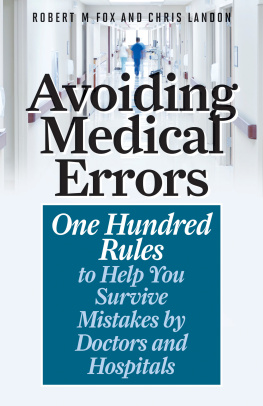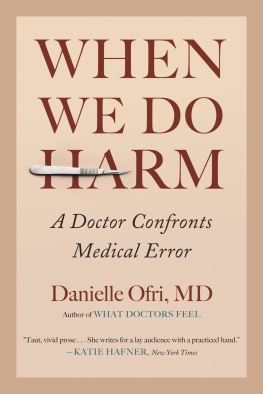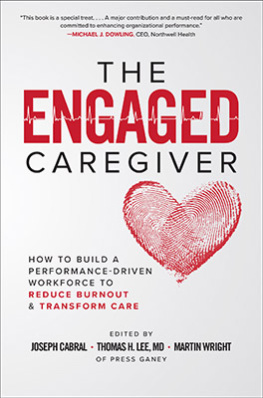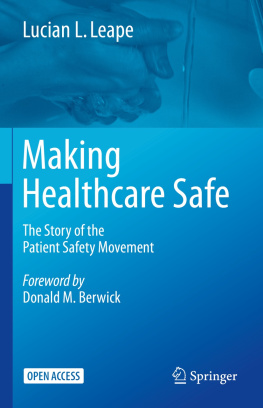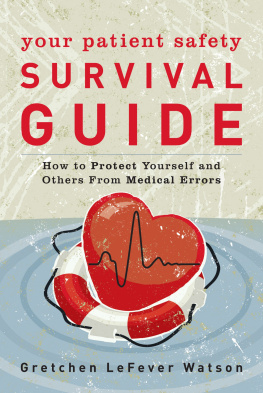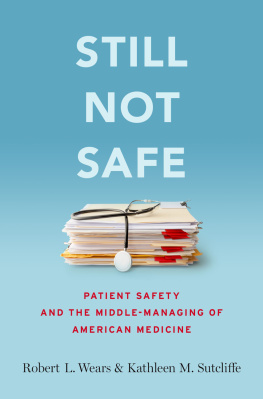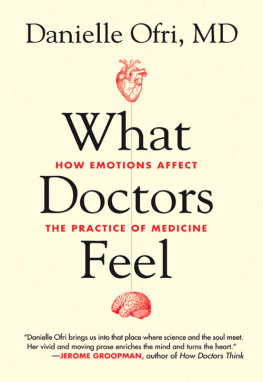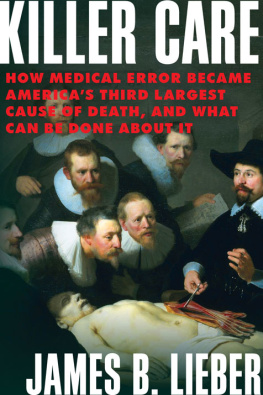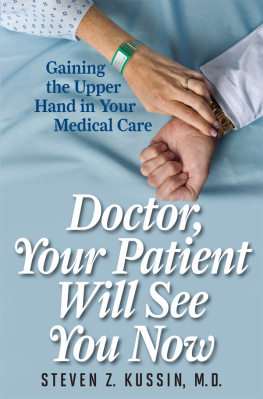For Georgina Hunter
Her personal courage helped usher in a new era in the awareness of medical errors and showed that even one person has the power to create significant change.
When you speak the unspeakable, something is lost and something is gained. I lost years of my life, but I gained a priceless connection with ethical, caring people. Georgina Hunter
ACKNOWLEDGMENTS
We would like to thank the contributors to this book, who were willing to share both their pain and their accomplishments and to persevere through the lengthy writing and editing process. Each one, in a unique way, helped to demonstrate that although medical errors do occur, it is possible to step outside of ones grief, anger and comfort zone to provide education to the public as well as work for changes in systems, laws and attitudes.
Many friends, relatives and associates have encouraged us in a variety of ways. We would like to mention and thank Georgina Hunter, Harry Goldhar and Dorothy Harp.
Helen Haskell assisted us by contacting potential contributors and providing support during this project.
We would like to especially acknowledge and thank Rhonda Nixon for the role she has played in generously assisting and supporting us over the past three years. Her experience, efforts and friendship were essential to the concept and preparation of this book.
We are indebted to Jack David for seeing the potential in our original concept and accepting this work for publication. The manuscript was greatly improved by the editorial assistance of Crissy Boylan and Kathleen Fraser. Erin Creasey and Athmika Punja deserve mention for their diligence and professionalism in promotion, sales and marketing. Thanks also to Carolyn McNeillie for the cover graphics and Sarah Dunn for publicity.
DISCLAIMER
This book contains stories documenting contributors experiences with medical professionals. The authors have taken reasonable steps to verify the contributors accounts, and each contributor has declared that the stories are true and accurate. Readers are advised not to rely in any way on the specific facts portrayed in any of the accounts and are prohibited from reproducing, publishing, translating and in any way commercially dealing with, in any medium, the accounts or any portion thereof without the written permission of the authors and the publisher.
A few of the stories in this book were written by the contributors; most were prepared by the authors based on personal interviews, telephone conversations, emails, newspaper and magazine articles, coroners reports, medical records, books and articles, notes and rough drafts.
FOREWORD
When a plane crashes, it is national, if not international, news. The question invariably posed is How did this happen? The television reporter, standing near the site of the crash, tells us that the black box is being located and that its contents will be meticulously examined for clues about what went wrong.
A 2012 study estimated that 40,000 Canadian patients die every year as a result of medical error. That is the equivalent of 80 jumbo jets crashing every year one every five days or so. If a plane was crashing every five days, would anybody ever fly? Yet while individual cases of medical error do make headlines, the sheer and unacceptable scale of this worldwide problem is something that most people simply cannot comprehend.
Each story in this book is a black box. Each is a tragedy. But each is also a treasure trove, offering clues about what went wrong. You need only read two or three stories before patterns start to emerge. This book offers lessons, not just about what went wrong in each of these cases, but also about what is going wrong across the worlds health-care systems, and about the factors that transpire to cause tragedy in the very places where we seek relief when we are sick.
A planes black box records every bit of data imaginable about the flight in real time. It also records the voices of those at the centre of the unfolding tragedy the pilots in the cockpit. This book tells the stories of those at the centre of their own unfolding tragedies. In most of the cases, these people died. This book gives them a voice.
When I founded the World Health Organizations first ever program on patient safety, it was the stories of patients and their relatives that motivated me. I vividly recollect even small details of their descriptions. This book exists because people have volunteered to share their most painful experiences. In doing so, they offer up a challenge to the health-care community, which is to eke out every possible piece of learning from these stories, so that they do not just remain as tragic stories but provide the basis on which improvements are made.
At the centre of this book is the difficult truth that thousands of people die unnecessarily in the hands of our health-care systems. Sometimes these are people who were critically unwell, but often they are people who were not. Yet interwoven through this book are also stories of hope and of individuals who have used their own experiences as a force for good, who have shared their stories so that others may avoid the same fate. The title of this book attests to its ambition to speak out about patient safety, so that lives may be saved. As you read this book, please think hard. Think what went wrong. Think what needs to change. If we can collectively do this, and act on what we learn, we can make our health-care systems as safe as our airlines are.
Professor Sir Liam Donaldson
World Health Organization
Envoy for Patient Safety
INTRODUCTION
It takes courage to speak out about medical errors. It takes persistence, stamina and support from others to effect change. This book was written to recognize the patients and families whose activities have helped to lay the foundation of current patient safety programs and who continue to raise awareness, identify problems and provide solutions. Their accomplishments have often come at considerable emotional, psychological and financial expense. Their stories provide examples of what can be done to promote safer health care and also remind readers that in spite of increasing efforts to prevent errors, they continue to devastate lives. The contributors are all Canadians; however, their experiences and achievements speak to the world.
American patients and media have played a significant role in drawing attention to medical errors. In the 1970s and 1980s, medical malpractice claims associated with anesthesia accounted for a disproportionately high payout of medical liability insurance. In the early 1980s, national media publicity turned a harsh spotlight on injuries associated with anesthesia. The Anesthesia Patient Safety Foundation (APSF) was established in 1985 to address these concerns and as a result anesthesiologists have become widely recognized as pioneering leaders in patient safety.
In 1999, the Institute of Medicine (IOM) of the U.S. National Academy of Sciences released its landmark report, To Err Is Human: Building a Safer Health Care System.1 The report stated that 44,000 to 98,000 preventable deaths occur annually because of medical errors in hospitals alone. At the time, these numbers were startling; however, more recent studies have found medical errors to be much more prevalent.
A survey completed in 2012 revealed that almost one third of Americans reported that either they or a friend or family member had experienced a medical error.2 Based on a population of approximately 320 million, this survey indicated that close to 100 million Americans have had direct or indirect experience with medical errors. As many as 25 percent of all hospital patients are harmed by medical errors, according to a 2010 report.3 The study found little evidence that efforts to reduce errors have translated into significant improvements in the overall safety of patients. In 2011, it was reported that adverse events occur in one third of hospital admissions.4
Next page
